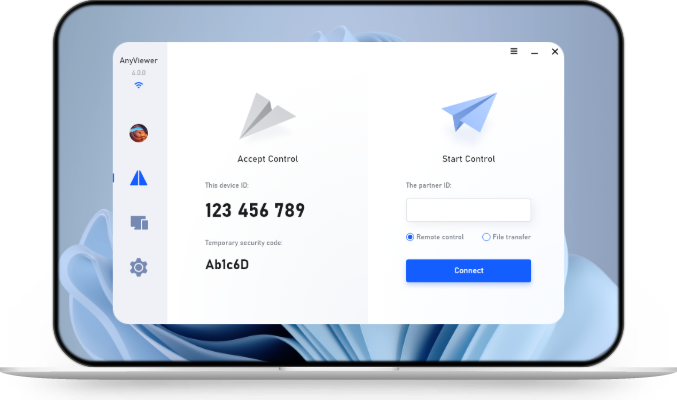Effortless File Transfer: How to Transfer Files from iPhone to Laptop Without USB
This article guides you through wireless file transfer methods, providing steps for transferring files from iPhone to laptop without USB. Learn about AnyViewer's file transfer capabilities and the advantages of embracing modern solutions for a seamless experience.
Introduction
In the digital age, the need for transferring files between devices has become a common occurrence. While traditional USB methods have been widely used, they come with limitations. This article explores the modern approach of transferring files from an iPhone to a laptop without using a USB cable. We'll delve into wireless file transfer methods, including the use of AnyViewer for a seamless experience.
How to Transfer Files from iPhone to Laptop Without USB
Exploring Wireless File Transfer Options
Gone are the days of relying solely on USB cables for file transfer. Modern technology offers wireless alternatives that provide convenience and flexibility. These options include Apple's native AirDrop, iCloud Drive for cloud-based syncing, and various third-party apps designed for wireless file transfer.
Step-by-Step Guide for Transferring Files Without USB
Way 1. AirDrop: Enable AirDrop on both your iPhone and laptop. Select the files you want to transfer on your iPhone and choose the recipient (your laptop) through AirDrop.
Way 2. iCloud Drive: Ensure iCloud Drive is enabled on your iPhone. Upload the files to iCloud Drive, and they will automatically sync with your laptop if both devices are connected to the internet.
Way 3. Third-Party Apps: Explore third-party apps like AnyTrans, FileMaster, or Documents by Readdle. Install the chosen app on both devices, follow the app-specific steps, and transfer files wirelessly.
Benefits of Wireless Transfer
Wireless file transfer offers several advantages over traditional USB methods:
- Convenience and Flexibility: No need for physical connections; transfer files from anywhere within wireless range.
- Time-Saving: Eliminate the hassle of locating and connecting USB cables, saving valuable time.
- Enhanced User Experience: Enjoy a seamless and user-friendly experience with modern wireless transfer methods.
AnyViewer for File Transfer from iPhone to Laptop
Overview of AnyViewer
AnyViewer, known for its remote access capabilities, also provides a reliable solution for file transfer. It is a versatile tool that simplifies the process of transferring files between your iPhone and laptop.
File Transfer Capabilities of AnyViewer
AnyViewer facilitates file transfer through its intuitive interface. Users can easily send files from their iPhone to a laptop or vice versa, streamlining the sharing process.
Steps to Transfer Files Using AnyViewer
Step 1. Install AnyViewer: Download and install AnyViewer on both your iPhone and laptop.
Step 2. Connect Devices: Open AnyViewer on both devices and establish a connection.
Step 3. File Transfer: Navigate to the "Files & Extras" tab and select the files you want to transfer. Use the drag-and-drop feature or the file transfer option to initiate the process.
Wireless File Transfer Methods
AirDrop: Apple's Native Wireless Transfer
AirDrop is an Apple-exclusive feature that allows users to share files wirelessly between Apple devices. It utilizes Bluetooth and Wi-Fi for a seamless and secure transfer experience.
iCloud Drive: Cloud-Based File Syncing
iCloud Drive is Apple's cloud storage service that syncs files across devices. Upload files to iCloud Drive, and they become accessible on all connected Apple devices, ensuring seamless syncing.
Third-Party Apps for Wireless Transfer
Various third-party apps provide wireless file transfer solutions for both iOS and Windows. These apps often offer additional features and customization options, catering to diverse user preferences.
Advantages of Wireless File Transfer
Convenience and Flexibility
Wireless file transfer methods offer unparalleled convenience. Users can share files without the need for physical connections, providing flexibility and ease of use.
Time-Saving Compared to USB Methods
Eliminating the process of connecting and disconnecting USB cables saves valuable time, allowing for quick and efficient file transfers.
Enhanced User Experience
Modern wireless file transfer methods contribute to an enhanced user experience, promoting a seamless and intuitive approach to sharing files between devices.
Conclusion
In conclusion, the era of relying solely on USB cables for file transfer is evolving. Embracing wireless methods, including Apple's AirDrop, iCloud Drive, and tools like AnyViewer, opens up new possibilities for effortless file sharing. Whether you prioritize native options or explore third-party apps, the advantages of wireless file transfer extend beyond convenience. It's time to bid farewell to traditional constraints and welcome a seamless and modern approach to transferring files from your iPhone to your laptop.
FAQs
Can I use AirDrop to transfer files between an iPhone and a Windows laptop?
No, AirDrop is an Apple-exclusive feature and is only compatible with Apple devices. However, alternative wireless transfer methods, such as third-party apps, can be used for cross-platform file transfers.
Does AnyViewer support large file transfers between an iPhone and a laptop?
Yes, AnyViewer supports the transfer of large files between devices. Its file transfer capabilities are not limited by file size, providing a versatile solution for users with varying transfer needs.
Are third-party apps for wireless file transfer secure?
Security varies among third-party apps. It's essential to choose reputable apps from trusted sources, read reviews, and adhere to recommended security practices to ensure a secure wireless file transfer experience.

